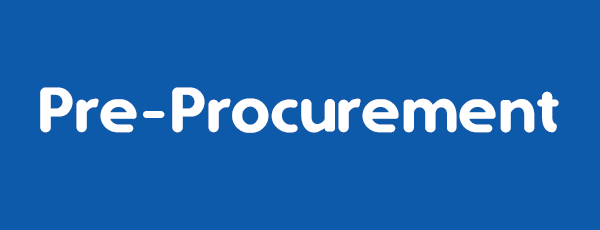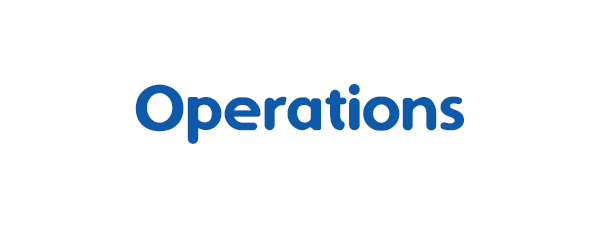Operations and Maintenance Role in a P3
P3s are performance-based contracts between a public agency and private project company for the delivery of a service. The performance will be delivered by the project company’s operator during the operations period of the P3 contract. The success of the P3 project will be defined by the asset’s performance and how that conforms to the public agency’s needs, budget, and mission over the operating life of the project. Keep in mind that the public agency’s Operations and Maintenance (O&M) staff are most often the P3 project’s end-users or managers.
The technical terms of a P3 typically refer to those activities for which there are performance standards or outcomes. These activities should be consistent with current proponent practices to provide the optimum development strategy of the private sector, and on a practical level, ensure that the outcomes are reasonably obtainable. Higher performance standards or outcomes may increase costs to the owner, so dialogue during the development phase of a P3 is highly encouraged in particular to identify outcomes ensure that both industry and the owner have a full understanding of what is being proposed, and the cost impacts of those requests.
Implementing a P3 therefore requires careful consideration of the O&M standards applicable, the measures to be monitored for the services provided, and the best O&M management practices sought. It is also important to identify all of the communications and interactions needed throughout the entire term of the contract and at its conclusion.
A P3 contract needs to include all of the appropriate standards of performance with defined reporting, processes and procedures, which have commensurate consequences and possible damages for lack of performance. It is essential that the O&M considerations of a P3 be identified as early as possible in the project to ensure inclusion of the necessary contractual provisions for all of the O&M interactions required to jointly manage the project and meet its objectives. Project designs that integrate the O&M considerations and expectations typically yield the best economic and performance projects.
Since water infrastructure systems are dynamic in nature, what is needed today is likely not going to be what may be needed a few months or years from now. Water P3 contracts may also need provisions to address changes in the demands for their service over time.
The Operations Need Assessment is a crucial work stream that should run concurrently with the development of the project definition during the implementation of a P3.
- What are the inputs and outputs necessary to manage the capital assets that will provide the services over the term of the contract?
- What records and reports are required, and how and where will they be maintained?
- What are the appropriate standards for maintenance and equipment renewal and replacement?
- How will regulatory compliance and public information for the project be addressed?
- What approvals will be required by the public agency over the term?
- What happens if the demand for services changes over time?
- What are the project company’s responsibilities to turn over the facilities at the end of the term?
- How will ancillary equipment such as O&M software, inventory and vehicles be addressed at the project turn over?
In a greenfield P3 there are no existing O&M staff, however in a brownfield P3, provisions for transferring or retaining staff are considered. Additionally in a brownfield P3, transferring ancillary equipment such as existing computers, O&M software, inventory and vehicles needs consideration.
O&M Practical Guide for P3 Partnerships
At the core of P3s in the water market is usually a complex capital asset consisting of various components of facility and equipment that have useful lives that can range from a decimal fraction of the P3’s term to twice or three times that term. A fundamental consideration of a P3 is the required condition of the project’s assets at the end of the term.
Consequently, in consideration of achieving that goal, specifying maintenance management practices and activity reporting are typical project considerations. In addition, carefully crafted contract provisions for monitoring the management and replacement of equipment and facilities over the longer term are needed. The objective is to ensure the project company is appropriately incentivized to optimize the useful lives of all of the asset classes involved, without the need for micromanaging. Various technical and financial commercial terms and conditions can be applied to help ensure that the project’s assets are appropriately maintained. It is worth reiterating that clearly articulated standards of performance with defined reporting, processes and procedures for all maintenance, and commensurate consequences for lack of performance should be included in the P3 contract. Lastly, if the project’s assets are to be turned over to the public agency under any condition of the P3 contract, there should be careful consideration of a fair and equitable pre-end of term condition assessment and the appropriate asset transfer conditions.
The public owner retains the right to conduct the monitoring and validation process which oversees the project company’s performance, in relation to the maintenance management provisions and procedures set forth in the project agreement. Agencies may, either jointly or independently, conduct performance audits and/or inspections of the project as a precedent to the end-of-term transfer to assure compliance with any end-of-term asset condition contract provisions.
The long-term maintenance of an asset is a key benefit of the P3 structure. The inclusion of the O&M contractor in the bidding process results in cost saving and value-added synergies during the O&M period. Periodic maintenance is important to ensure the asset is in good condition when the project reaches the end of its term and is handed back to the public owner. Regular maintenance is also key to ensure the asset runs reliably and within the contracted budget. A typical minimum level of maintenance should include:
- Review of maintenance schedule laid out in project agreement
- Task prioritization based on schedule
- Regular review of supplies on hand
- Issuing maintenance work orders
- Review of past performance
- Modification of schedule based on performance
- Budget management
At its core, a P3 project is a specified service provided for a given price, and it is important to be mindful of the information that is needed to manage the project, what may be considered confidential, and what right of approvals that will be retained or necessary to allow all parties to perform their obligations. A significant consideration in a P3 is the requirement of the project company to maintain records, and the rights of the public owner to access those documents, which often include updated as-builts, specifications, O&M manuals, operating permits, operating plans (e.g. hazard management), equipment manufacturers’ information, warrantees, regulatory compliance reports and correspondences. The public owner may also consider requiring periodic information reports throughout the lifetime of the O&M phase.
Since P3s are a partnership, retaining approval rights should be considered by the public agency. This ensures the agency has a voice on issues that are material to the project, such as change of permit conditions by the project company, change of owners or refinancing, or selling of services directly to third parties. It is also important to address related processes and procedures. Clearly defined and communicated timelines for the processes are crucial, since public agencies’ schedule considerations in relation to granting approvals frequently differ from those of the private partner.
A 360 degree view and analysis of costs over the full life cycle of assets.
The public owner should address requisites and select contract terms based on a needs assessment and analysis. This will be driven by available financing terms or owner-industry specific considerations, such as IRS safe harbor rules, or offering O&M terms to attract qualified teams and encourage competition. Decisions will vary and address the fundamental requirements of both the asset in question, and the procuring authority. Terms vary, and are best determined through careful analysis such as >5 years, up to 20 years, or <2 years, so the owner can take over and operate the asset.






